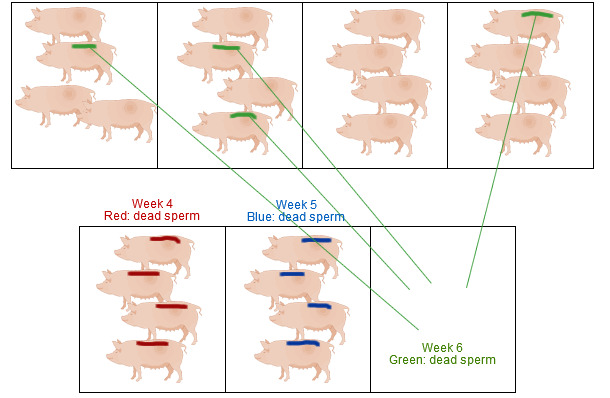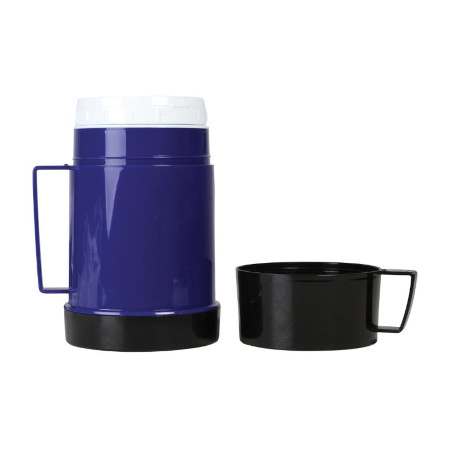Objective
Arrange the gilts heat in time sequence.

Description
The strategy involves synchronizing the gilts so they come into heat at the same time, in order to properly manage the number of inseminations targeted for each batch. Gilts coming into heat for the first or second time are identified by colour, which will vary depending on the heat chosen for insemination.

Explanation
During the gilts daily heat check, replacement gilts are marked with a colour that changes every week, i.e., in week 20, sows in heat will be marked blue; in week 21 red, and in week 22 green. Once the 3-week cycle (which is also the gilts cycle) is complete, the first colour (in this case blue) will be used again.
Once the heat's been detected and the gilts marked, those with the same colour will be moved to a single pen; and the same procedure will be followed in the next weeks. At the end of the third week the gilts marked in blue, in this example, will come into heat. Thus, we know how many gilts will come into heat, and we can better manage their feeding and the use of boars.
Benefits
-
Time saving, since knowing the dates of the previous and next heat means we don't need to stimulate or control the heat in gilts. Stimulation with the boar will take place on the week the gilt is supposed to come into heat.
-
Being able to concentrate on the rationing stage (unstimulated) of a specific group.
-
Knowing the potential of gilts to come into heat.
-
Optimizing and chronologically organizing pens of gilts.
-
Being able to inseminate sows in heat where no fertilization occurs with dead sperm, thus improving performance and ensuring a proper oestrous cycle.

Material used
- Blue spray or chalk.
- Red spray or chalk.
- Green spray or chalk.




